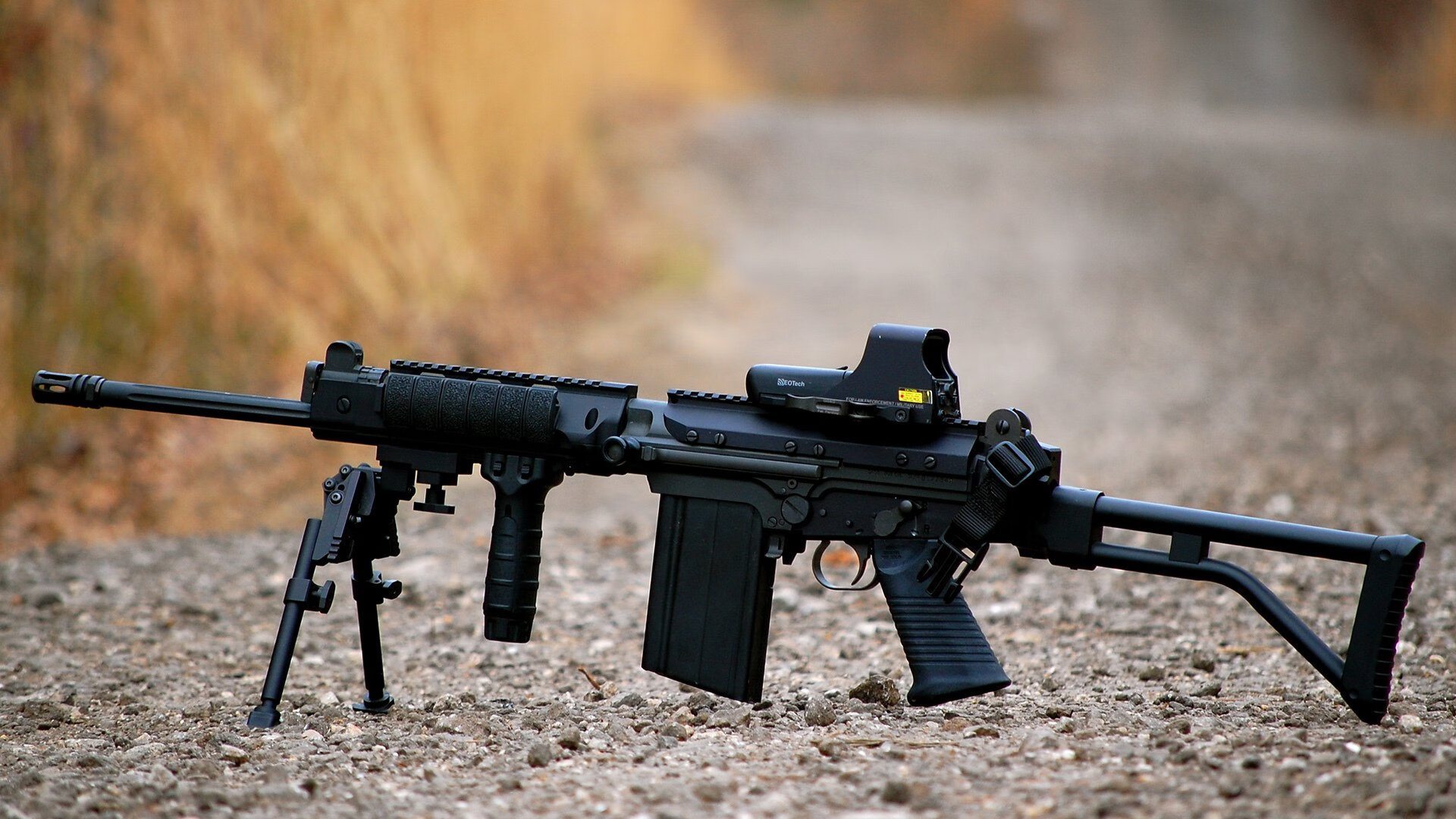09月22日, 2014 95次
被动语态 1. 构成:主语 + be动词 + 动词过去分词 (+ by + 动作执行者)。应用到各时态和句型里的形式如下(用于不同时态的用法和注意事项请参照"语法结构"中的相关内容): 1) 一般现在时:am/ is/ are done 2) 现在进行时:am/ is/ are being done 3) 现在完成时:have/ has been done 4) 现在完成进行时:have/ has been being done 5) 一般将来时:will be done 以应该用将来时的被动语态。 6) 将来进行时:will be being done 7) 将来完成时:will have been done 18) 不定式的被动语态:to be done 本回答由网友推荐
被动语态定义 英语的语态是通过动词形式的变化表现出来的。英语中有两种语态:主动语态和被动语态。 主动语态表示主语是动作的执行者。 例如:Many people speak Chinese. 谓语:speak的动作是由主语many people来执行的。 被动语态表示主语是动作的承受者,即行为动作的对象。例如:Chinese is spoken by many people. 中文Chinese是动词speak的承受者。 1. 定义:被动语态,即不知道动作执行者或强调动作承受者的一种语态。例如中文常说:我被他打,这就是一种被动。但有时由于句子结构上的需要也要用被动,例如It is not unusual for workers in that region to be paid more than a month it 在句中作形式主语。而不定式to be paid more than a month是句子的逻辑主语。结合选项全句的意思是:“那个地方的工人一个多月后才得到工资是常有的事”。 2. 构成:be+past participle(过去分词)(简称P.P.)(+by+动作执行者)(过去分词的概念见上课) 3. 当主动语态要被改成被动的时候,我们把原句的宾语提前,作为改句的主语,主语后置,作为宾语。因此有一点要注意,不及物动词由于不加宾语,没有被动形式,但不及物动词如果与某些介词构成介词短语,可以用被动。例如The fire had been put out before the fireman arrived. Put是不及物动词,但put out是及物动词 4. 应用到各种时态和句型,如下: ① 一般式(一般现在,一般过去,一般将来):am, is, are, was, were, is going to be , will be+done.ie. Once environmental damage is done, it takes many years for the system to recover. 本句的意思是:“环境一旦遭到破坏,需要多年时间才能恢复过来。”do作为及物动词有“引起,产生”的含义,do damage的意思是“造成破坏”。主语damage是及物动词do的动作对象,谓语应当用被动语态。同样的,还有,I will mend the machine.相当于The machine will be mended (by me). ②进行时(现在进行、过去进行、将来进行):be+being+P.P. ie.The classroom is being cleaned. ③ 完成时(现在完成、过去完成、将来完成):have/has been + P.P.:例如The machine will have been repaired by 3 o’clock this afternoon.再如:My homework has been finished. ④ 其他时态 以此类推,可得到结果。 ⑤ 情态动词的被动语态:主语 + 情态动词 + be动词 + 动词过去分词,例如Your teeth must be brushed. ⑥ 不定式的被动语态:to be done例:The no-shows have to be considered when deciding the rate of overbooking.(确定超过接待能力的预定时必须考虑预定了房间却来不了的客人。) 主动语态变为被动的几个特殊情况 ① 有些动词在主动结构中,后面接不带to的不定式,但如果改为被动,则需把省略的to加上,这类动词有 [let, make, have,help]和感官动词[feel,see,hear,watch,look at,listen to],如:The boss made my grandfather work 10hours a day.改成My grandfather was made to work for 10 hours a day. ② 含有宾语从句的主动结构变为被动,通常用it作为被动结构的先行主语,从句放在句子后面/也可采用另一种形式,这类动词有:know, say, believe, find, think, report等 ③ 是所有的主动句都可以变换成被动句,更不是所有的被动句都可以自由变换成主动句。虽然语法原则上允许主动和被动句的互相转换,但有的句子转换后会变成不通顺或不地道的英语句子。因此,在某些题目里,这也成为判断应该用主动还是用被动的依据。 例:At 5:05 p.m. on Saturday 19th July , there was an accident at the junction of the Main Street and Panda Road when a boy was knocked down off his bicycle by a delivery van. The boy was sent to St. Maria Hospital where he was treated for shock and a broken arm. 在这段文章里,a boy was knocked down off his bicycle by a delivery van这句被动句强调出读到文章的人最关心的事故的受害者。The boy was sent to St. Maria Hospital这句话则说明了孩子被送到医院的事实,至于是由谁(某个过路人?或肇事司机?)送的不重要。he was treated for shock and a broken arm这句被动句无须说出treat这个动作的发出者,因为在医院,伤病员自然由医务人员处理,无须罗嗦。这样,这段文章就重点突出,条理清楚了。 ④ 有些动词可以有两个宾语,在用于被动结构时,可以把主动结构中的一个宾语变为主语,另一个宾语仍然保留在谓语后面。多是把间接宾语变为主语。这样句子自然些。直接宾语变为主语时,间接宾语要变为某个介词的宾语,介词to可以省略。如His father left him this house.改为This house was left (to) him by his father. ⑤ 有些动词虽为及物,但宾语并非是动作承受者,不能转换,这些动词有have, hold(容纳),suit, fit, lack, become(适合)contain, cost, last, mean, suffice(足够)等。 ⑥ 当直接宾语为反身代词、相互代词或宾语前有指代主语的物主代词时不用被动,如I shook my head.我摇摇头。 ⑦ 当宾语为同源宾语(与主句指同一人),动名词,动词不定式或一个从句时不用被动。如John enjoyed seeing the fil,. ⑧ 在一些固定说法中,有些名词和动词结合的固定说法,不能改We Chinese always keep our word. ⑨ 某些从不及物动词转化来的及物动词,直接宾语在表示动作的方式或效果时,这些动词在意思上起状语的作用,没有被动The girl kissed her boyfriend good night=The girl said good night to her boyfriend by kissing him.(这个女孩说了晚安并且亲了他的男朋友) ⑩ 表地点\处所\组织\长度\大小\数量\程度\抽象名词的词做宾语时不用被动.
一般现在时:am\is\are+过去分词。 现在进行时:be动词+being+过去分词。 现在完成时:have\has+been+过去分词。 一般过去时:was\were+过去分词。 还有就是情态动词加上be+过去分词。 还有许多。我暂时不列举了。反正就是遵循一个原则:be动词+过去分词。
http://baike.baidu.com/view/135.htm进去看看吧,讲解得特别详细!
be动词加过去分词
一、语态概述 英语的语态是通过动词形式的变化表现出来的。英语中有两种语态:主动语态和被动语态。 主动语态表示主语是动作的执行者。 例如:Many people speak Chinese. 谓语:speak的动作是由主语many people来执行的。 被动语态表示主语是动作的承受者,即行为动作的对象。例如:Chinese is spoken by many people. 英语English是动词speak的承受者。 二、被动语态的构成 被动语态由“助动词be+及物动词的过去分词”构成。人称、数和时态的变化是通过be的变化表现出来的。现以speak为例说明被动语态在各种时态中的构成。 一般现在时:am/is/are+spoken 一般过去时:was/were+spoken 一般将来时:will/shall be+spoken 现在进行时:am/is/are being+spoken 过去进行时:was/were being+spoken 现在完成时:have/has been+spoken 过去完成时:had been + spoken 三、被动语态的用法 (1)不知道或没有必要说明动作的执行者是谁。 例如:Some new computers were stolen last night. 一些新电脑在昨晚被盗了。(不知道电脑是谁偷的) This bridge was founded in 1981.这座桥竣工于1981年。 (2)强调动作的承受者,而不强调动作的执行者。 例如:The glass was broken by Mike.玻璃杯是迈克打破的。 This book was written by him.这本书是他写的。 Your homework must be finished on time.你们的家庭作业必须及时完成。 四、主动语态变被动语态的方法 (1)把主动语态的宾语变为被动语态的主语。 (2)把谓语变成被动结构(be+过去分词)(根据被动语态句子里的主语的人称和数,以及原来主动语态句子中动词的时态来决定be的形式)。 (3)把主动语态中的主语放在介词by之后作宾语,将主格改为宾格。例如: All the people laughed at him. He was laughed at by all people. They make the bikes in the factory. The bikes are made by them in the factory. He cut down a tree. A tree was cut down by him. 五、含有情态动词的被动语态 含有情态动词的主动句变成被动句时,由“情态动词+be+过去分词”构成,原来带to的情态动词变成被动语态后“to”仍要保留。 We can repair this watch in two days. This watch can be repaired in two days. They should do it at once. It should be done at once. 六、特殊情况 1.He made the boy work for two hours yesterday. The boy was made to work by him for two hours yesterday. 2.Mother never lets me watch TV . I am never let to watch TV by mother. 3.Jack gave Peter a Christmas present just now.(1)A Christmas present was given to Peter by Jack just now. (2)Peter was given a Christmas present by Jack just now. 追问 请说明什么是动作的承受者,什么是动作的执行者,怎么找主语。 已经比较满意,但还需回答这个问题,好的会采纳 本回答被提问者采纳
我扫地,反过来就是地被我扫,改被动语态还涉及代词,时态的变化。需要的话我会详细解答 追问 看了语法手册,就是看不懂 追答 一般现在时要变为一般过去时一般过去时改为过去完成时现在完成时改为过去完成时现在进行时改为过去进行时一般将来时改为过去将来时这是初三的学习内容

第一类:be(“是/存在”)动词的各种时态结构: 一 般 现 在 时 I am…. You are.… He/She/It is…. We/You/They are…. 一 般 将 来 时 (1)(I等各人称) will be…. (2)I am going to be… He/She/It is going to be… We/You/They are going to be… 现 在 完 成 时 I have been…. You have been…. She/he/It has been…. We/You/They have been…. 一 般 过 去 时 I was…. You were.… He/She/It was…. We/You/They were…. 过 去 将 来 时 (1)(I等各人称) would be…. (2)I was going to be… He/She/It was going to be… We/You/They were going to be… 过 去 完 成 时 I had been…. You had been…. She/he/It had been…. We/You/They had been…. 第二类:行为动词的各种时态结构: 一 般 现 在 时 动词用原形(单三人称动词加s / es) (问句和否定句借用助词do / does) 一 般 过 去 时 动词用过去式 (问句和否定句借用助词did) 现 在 进 行 时 am +动词-ing is +动词-ing are +动词-ing 过 去 进 行 时 was +动词-ing were +动词-ing 一 般 将 来 时 (1)will + 动词原形 (2)am +going to+动词原形 Is +going to+动词原形 are +going to+动词原形 过 去 将 来 时 (1)would + 动词原形 (2)was +going to+动词原形 were +going to+动词原形 现 在 完 成 时 have +过去分词 has +过去分词 过 去 完 成 时 had +过去分词
被动语态是有关动词的语法范畴,它用于被动结构的句子中,表示主语是动作的承受者 1)被动语态的构成形式:助动词be+及物动词的过去分词(助动词的be要随主语的人称和数作相应的变化,并且有不同的时态形式。 English is taught in this elementary school. All the tickets were sold out. The decision will be announced 2)如果句子的谓语是个动词词组或者动词短语,在变成被动语态的时候,整个动词短语或者动词词组要被当做一个单个的及物动词来处理 the film has been much talked the plan was given up what he said should not be laughed at 3)一个句子如果有主动语态变为被动语态,原来的句子中的主语也就是动作的执行者,在被动语态的机子重要用介词“by”引出 jack is putting up a picture on the wall / a picture is being put up on the wall by jack 4)一般来说,在被动语态句中由“介词by+动作的执行者”的介词短语通常可以省略,尤其是在动作执行者难以或者不需要明确指出的时候。因为在被动语态句中主要强调的是动作的承受者,而动作的执行者已经被降到了次要的地位。但是如果动作的执行者在主动语态的句子中仍然是受强调的成分,那么变为被动语态的时候,这个动作的执行者仍然要保留。 Shakespeare wrote Hamlet / Hamlet was wrote by Shakespeare被动语态中的情态动词: this word can also be used as a verb this must be done at once the question is going to be discussed soo被动语态的否定式与疑问式: the poem wasn't written in 1931 this sentence can't be analyzed this way when was the place built? has anything been done about it?
http://baike.baidu.com/view/135.html?wtp=tt 本回答被提问者和网友采纳
人教新目标版 初三 Unit3标题:Teenagers should be allowed to choose their own clothes (一)被动语态的构成1.被动语态的基本结构:be+动词过去分词2.各种时态的主动被动语态结构(以动词do为例) 一般现在时 do/ does am/ is/ are+done We clean the classroom. The classroom is cleaned by us. 一般过去时 did was/ were+done He made the kite. The kite was made by him. 现在进行时 am/ is/are+doing am/ is/ are+being done She is watering flowers. Flowers are being watered by her. 现在完成时 have/has+done have/ has+been done Jim has finished the work. The work has been finished by Jim. 一般将来时 will/ shall/ be going to +do will/ shall/ be going to+be done They will plant trees tomorrow. Trees will be planted by them tomorrow. 过去进行时 was/ were+doing was/ were+being+done She was writing a letter this time yesterday. A letter was being written by her this time yesterday. 过去完成时 had+done had+been+done Jim had finished the work. The work had been finished by Jim. 过去将来时 would/ should/ be going to+do would/should/ be going to+do He said he would made a kite. He said a kite would be made by him. 含有情态动词 can/ may/ must+do can/may/must+be+done I can find him. He can be found by me.(二)被动语态的用法被动语态中主语是动作的承受者,主要用于下列几种情况1.不知道动作的执行者是谁。e.g.This watch is made in China.这块手表是在中国制造的。2.没有必要指出动作的执行者是谁。e.g.More trees must be planted every year.每年必须有更多的树被种植。3.需要强调或突出动作的承受者时。e.g.Chinese is spoken by more and more people in the world.世界上越来越多的人说汉语(强调汉语的使用广泛)。4.动作的发出者不是人时。e.g.Many houses were washed away in the flood.很多房屋在洪水中被冲走了。(三)主动语态和被动语态的转换1.主动语态变被动语态: (1)要将主动句里的宾语成分变为被动句中的主语成分,若主动句中的宾语是人称代词,要将宾格变主格。 (2)把主动句中的主语变为被动句中的宾语,主格变宾格,并由by引导。 (3)谓语动词变成相应的被动形式。 e.g.We asked him to sing an English song.我们让他唱一首英语歌。He was asked to sing an English song by us.他被我们要求唱一首英语歌。2.带双宾语的谓语动词变为被动语态 谓语动词带双宾语时,既可以将间接宾语转化成主语,也可接直接宾语转化成主语。若将间接宾语转化成主语,则保留直接宾语;若将直接宾语转化成主语则保留间接宾语,且在被保留的间接宾语前加上介词to或for。e.g.She gave me a book. (变为被动语态)→I was given a book. (间接宾语me改为主语)A book was given to me. (育接宾语a book改为主语)3.短语动词变为被动语态 许多由不及物动词构成的短语动词,相当于及物动词,可以有宾语,也可以有被动语态。注意:短语动词是一个不可分割的整体,在变为被动语态时,不可丢掉构成短语动词的介词或副词。e.g.We should speak to old men politely. (变为被动语态)→Old men should be spoken to politely. (to不可省略)4.带复合宾语的动词变为被动语态 宾语加上宾语补足语一起构成复合宾语。变被动语态时,只把宾语变为被动句主语,宾语补足语保留在原处,成为主语补足语。e.g.I heard Jane playing the piano in her room.(变为被动语态)→Jane was heard playing the piano in her room.5.被动语态后动词形式的选择 主动句中在感官动词see、hear、watch、feel、notice等使役动词, 也称为感官动词,let、make、here等动词后跟省略to的不定式,变为被动句时,应加上不定式符号to。e.g.He makes the girl stay at home.(改为被动结构)→The girl is made to stay at home.Last Sunday we heard them sing Peking Opera in the theatre.(改为同义句)→They were heard to sing Peking Opera in that theatre last Sunday.四句话:①主语变成宾语; ②宾语变成主语; ③动词一分为二; ④时态体现在be动词上。(四)被动语态的一些特殊的运用形式1.主动结构表被动意义(1)open、lock、write、read、sell、clean、wash、cut、burn、drive等词作不及物动词时,它们的主语为物,可用主动语态表被动意义。e.g.This kind of pen writes very smoothly.这种笔写起来很流畅。This kind of shirt sells well here.这种样式的衬衫在这很好卖。(2)look、sound、taste、smell等系动词主动结构表被动意义。e.g.Uniforms look ugly on us. 我们穿着制服很难看。Mooncakes taste delicious. 月饼吃起来很好。(3)be worth doing中,doing表被动意义。e.g.This book is worth reading. 这本书值得一读。(4)want/ need/ require+doing相当于want/ need/ require+to be done。to be done表不定式的被动结构。e.g.My bike needs repairing.= My bike needs to be repaired.我的自行车需要修理。(五)不用被动语态的情况1.主动句的宾语是each other或反身代词时,不能用于被动语态。e.g.The man introduced himself as Mr. White. (主动语态)那个人自我介绍说他是怀特先生。Himself was introduced as Mr. White.(误)They help each other study English. (主动语态)他们互相帮助学习英语。Each other is helped study English. (误)2.当主动句的谓语动词是表状态的及物动词时,不能用于被动语态。e.g.We will have a meeting.我们将开一个会。3.主动语态的宾语是动词不定式或-ing形式时,不能用作被动语态的主语。e.g.My brother enjoys watching TVHe asked to have a try.他请求试一次。 注意:解答被动语态题目时,首先要判断主语和动作的关系,如果主语是动作的执行者,则用主动语态;如果主语是动作的承受者,则用被动语态
从初二上册起,开始有被动语态的句子出现,在初二下册增多,初三课本正式讲了。
初三上学期开始,是重点。
初三
1-1 当句子的主语为动作的承受者即受动者,动词用被动语态。Eg. John helped Peter. (John是动作的施行者,而Peter是动作的承受者即承受者。) Peter was helped by John. (Peter是句子的主语,而且是动作的承受者,所以用被动语态。)1-2 被动语态的构成:be + 动词的过去分词2. 特别提醒:被动语态的时态和人称的变动都是由动词be作改变的,不论发生什么改变,动词的过去分词(v+ed或不规则的分词) 都不改变。时态用的助动词和人称代词由被动语态句子中的主语,即动作的承受者,所决定。2-1 Eg. He cleans the room everyday. The room is cleaned (by him) everyday. (一般现在时的被动语态构成: is / am / are + 动词的过去分词)2-2 Eg. They have brought many toys since last week. Many toys have been brought (by them) since last week. (现在完成时的被动语态构成:has/have + been + 动词过去分词。)2-3 Eg. They are meeting the foreigners at the gate. The foreigners are being met (by them) at the gate. (现在进行时的被动语态构成:is/ are/ am + being + 动词过去分词)2-4 Eg. They will build some new buildings next year. Some new buildings will be built (by them) next year. They are going to draw a new picture tomorrow. A new picture is going to be drawn tomorrow.(一般将来时被动语态构成:will + be +动词过去分词, 或is/am/are going to +be + 动词过去分词)2-5 Eg. Father has been painting the room all morning. The room has been being painted (by father) all morning.(仅作了解:现在完成进行时的被动语态:has/ have + been+ being + 动词过去分词)2-6 Eg. They wrote the book last year. The book was written (by them) last year. (一般过去时的被动语态构成:was/ were+动词过去分词)2-7 Eg. The children had broken the window when the teacher arrived. The windows had been broken (by the children) when the teacher arrived. (过去完成时被动语态构成had + been + 动词过去分词。)2-8 Eg. She was reading the book at 8:00 last night. The book was being read at 8:00 last night. (过去进行时被动语态构成:was/ were being + 动词过去分词)2-9 Eg. They said they would cook some food. They said some food would be cooked. They said he was going to buy a new house. They said a new house was going to be bought.(过去将来时被动语态构成:would +动词过去分词,或:was/were going to be + 动词分词)2-10 Eg. He must finish the work in two days. The work must be finished in two days. (情态动词被动语态:must/have to/had better/ should/can/could/may/might/need to + be +动词分词) 3. 间接引语中的被动语态:3-1 引述动词是一般现在时的时候,引语的人称根据引述动词前面的主语而作调整,但时态不变。Eg. He often says, “ I was chosen to take part in the exam when I was twelve.” He often says he was chosen to take part in the exam when he was twelve. (人称由引述动词says前面的主语he 决定,但引语的时态不变。)3-2 引述动词为过去时态,引语部分的时态和人陈都按照引述部分进行改变。Eg. He said, “ My father has been hit by a car.”He said his father had been hit by a car. (引语部分的时态和人称都发生了改变。)3-3 从上文可看出:引述动词是过去时态时,被动语态形式的引语改动规则与主动语态形式的引语的改动规则一样,但无论如何,只要是被动语态,它的动词的过去分词总是不改的。)4.几种特殊的情况需要特别注意:4-1. 带介词的双宾语可以有两种改法:eg. They gave him an apple. He was given an apple. An apple was given to him. (双宾语中当直接宾语apple 作被动语态句子的主语时,要记得写上介词to。)4-1-1这样的动词有:buy/make/cook sth for sb 或:show/bring/give/take/ send/write/… to sb.4-2. 多词动词的被动语态:eg. She looked after his children. His children were looked after (by her).4-2-1这样的动词有:look after, look into, talk about, set up, put off, bring about, do away with, look forward to, take good care of 等等词。4-3 It is/was/has been said/reported/known + that + 从句4-4 有些动词在主动语态里不带to,但改为被动语态时要还原tomake/see/have/hear/let sb do sth sb be made/seen/heard/let to do sth eg. The boss made the workers work for a long time. The workers were made to work for a long time (by the boss).4-5 有些动词在主动语态中带sb doing sth, 改为被动语态时仍用doing stheg. I heard him singing in his room. He was heard singing in his room.4-6 特别区分:当句子中出现suddenly, 具体的时间时,用see/hear sb doing sth的形式当句中出现often, always, sometimes, 或不具体的时间时,用see/hear sb do sth的形式。Eg. 1) I often hear him sing in his room. 2) Yesterday I saw him cross the road. 3) Suddenly they heard someone crying in the forest.4-7 不及物动词没有被动语态:happen, take place, begin, become, go, comeeg. Great changes have taken place in the last two years.4-8 表静态的动词没有被动语态:cost, last, agree with, own4-9 主动形式表示被动意义,通常用于表示sth的功能或效用: write/wash/cut/use/sell/cookeg. The cooker cooks well. The washing machine washes well.注意:动词的搭配:1.带sb to do sth的动词:allow/encourage/help/want/wish/ask/tell sb to do sth, 2.带 to do sth 的动词:hope/agree/decide/want/wish/prefer to do sth3.带 doing sth 的动词:enjoy/practise/think about/doing sth4.几对特殊的例子:remember to do sth (记得要做,但还没做) remember doing sth (记得要做,而且做了) forget to do sth ( 忘记要做,没有做) forget doing sth ( 做了,但忘记已经做了)5.prefer doing sth to doing sth6.look forward to doing sth7.介词后面用doing sth8.动词做句子的主语时用ing形式:Collecting stamps is interesting. 本回答由提问者推荐
sorry= = 追问 什么意思 追答 就是不懂= =

do be done